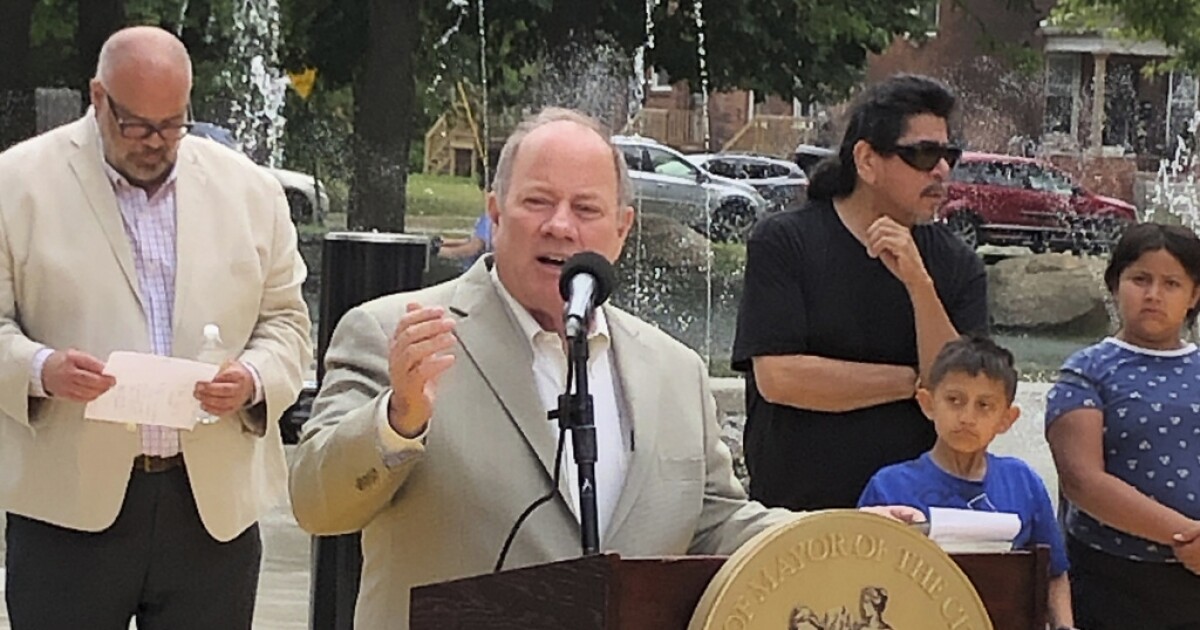

A multi-agency partnership in Detroit aimed at reducing gun violence seems to be paying off, with the city on track to record the fewest number of homicides in six decades, officials announced Monday.
Detroit has clocked an 18% decrease so far in 2023, according to newly released data. As of Nov. 30, the city has recorded 228 homicides compared to 276 the year before. In 2018, Detroit recorded 261 homicides, its lowest since 1966.
HOME ECONOMICS: IS THE US MISSING 2 MILLION HOUSES — OR 20 MILLION?
“This is the day we’ve been waiting for, for a long time,” Democratic Mayor Mike Duggan said.
City officials are crediting the dramatic drop with a multipronged approach that includes reducing felony gun case backlogs; increasing staffing at the district attorney’s offices as well as at the sheriff’s and Detroit Police Department; increasing coordination and communication between the district attorney and DPD on shooting and homicide cases; increasing accountability for people on probation and parole; and the creation of the FAST unit, a joint fugitive apprehension unit of the DPD and the sheriff’s office, which has cuffed close to 1,000 people with outstanding felony warrants in 2023, prioritizing those wanted for gun crimes.
“Leadership, teamwork, and a commitment to the community were key components of this initiative,” Wayne County Executive Warren Evans, who took the lead in coordinating efforts among the agencies and the courts, said during the press conference. “Our data shows that 50 fewer Detroiters will lose their lives to gun violence in 2023 and 100 fewer will suffer gunshot injuries.”
Detroit has been plagued with spikes in violence over the years, but the initiative to get aggressive about reversing the trend was put in place in 2021 during the COVID-19 pandemic. The city received $2.5 million in state funding and another $12.5 million in 2023 to address public safety initiatives.
Part of the reason why violent crime soared was because “the criminal courts shut down,” Duggan said.
“You could not put 12 jurors in a room,” he added.
Because the courts were closed, people who were charged with crimes were often out on bond and free to commit more illegal activity.
More funding coupled with creative strategies like virtual docking and hiring visiting judges to handle growing caseloads helped Detroit buck the national trend and clear a backlog of thousands of felony gun cases that had built up during the pandemic, Duggan said.
In addition to homicides being down in Detroit, the city also saw a 36% decrease in carjackings and a 13% decrease in nonfatal shootings.
“This collaboration has produced great dividends, great results,” Wayne County Prosecutor Kym Worthy said.
Even though city officials are touting the decrease in homicides as a major win, the murder rate is still significantly higher when compared to the 1960s thanks to the steep population decline. The city had been the automobile manufacturing hub in the first half of the 20th century but endured an economic downturn, employment decline, a massive population loss, and an increase in crime.
In 1966, when there was the previous low of 214 homicides, the population was 1.58 million, which is a murder rate of 13.5 per 100,000. Today’s population is less than half that, recorded at 639,111 in 2020. Using the to-date numbers for this year, that is a homicide rate of 35.7 per 100,000.
Detroit still has pockets of crime that are concerning, which includes a 17% jump in homicides in the city’s northwest 2nd Precinct and a 44% spike in the 4th Precinct, located on the southwest side. On the east side, homicides increased 21% in the 5th Precinct.
CLICK HERE TO READ MORE FROM THE WASHINGTON EXAMINER
Activist Teferi Brent told a local news organization that while the overall numbers are improving, real change comes by addressing systemic problems and pointed to a program that offers felons a second chance at bettering their lives. He added that the drop in crime should also be attributed to the work of community leaders and organizations.
“This is the work of everyone, not just law enforcement,” he said. “I’d argue law enforcement is the smaller part of the solution to this issue. It’s the work of people in the community who are organized and working to address the root-cause issues that contribute to criminogenic behavior.”





